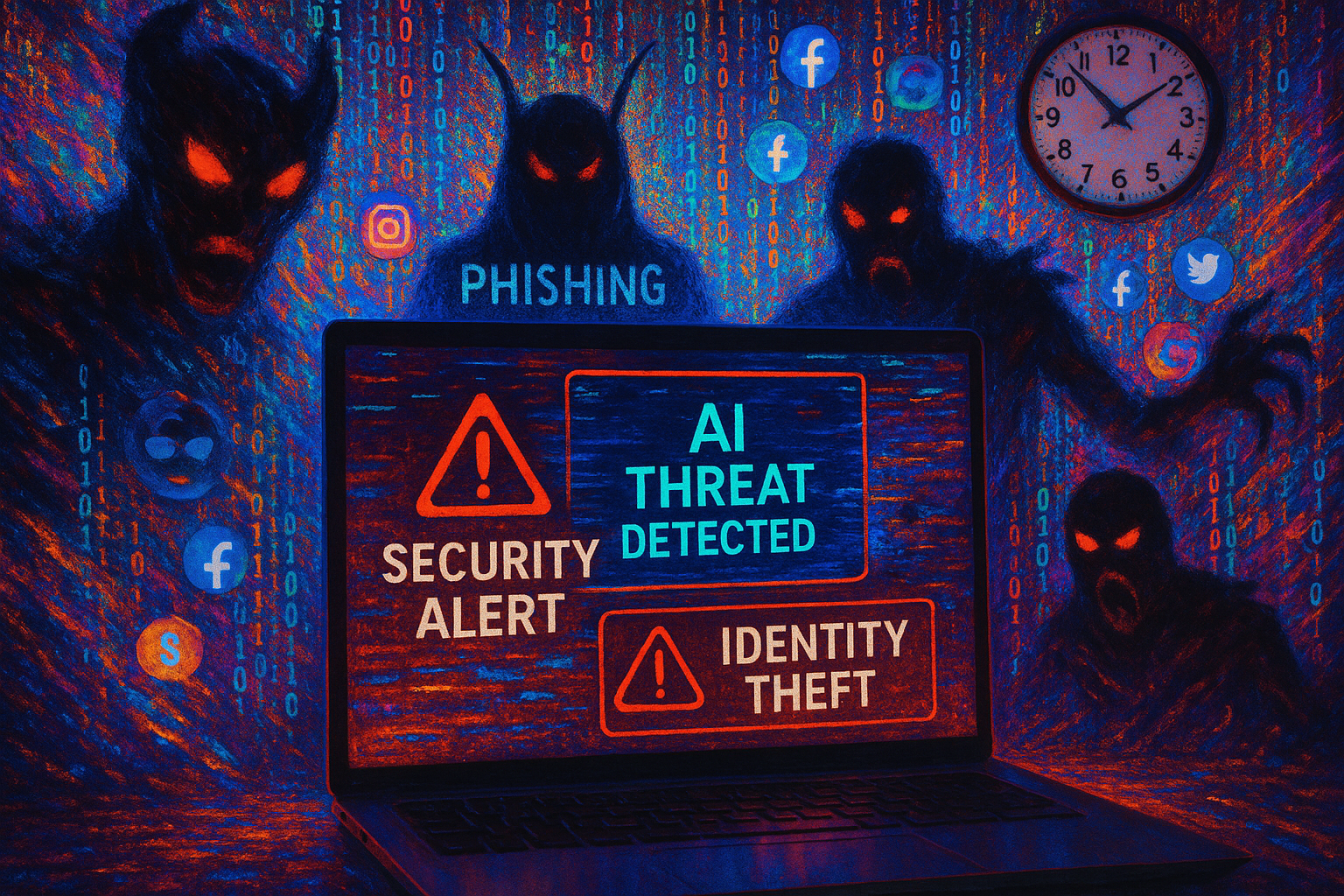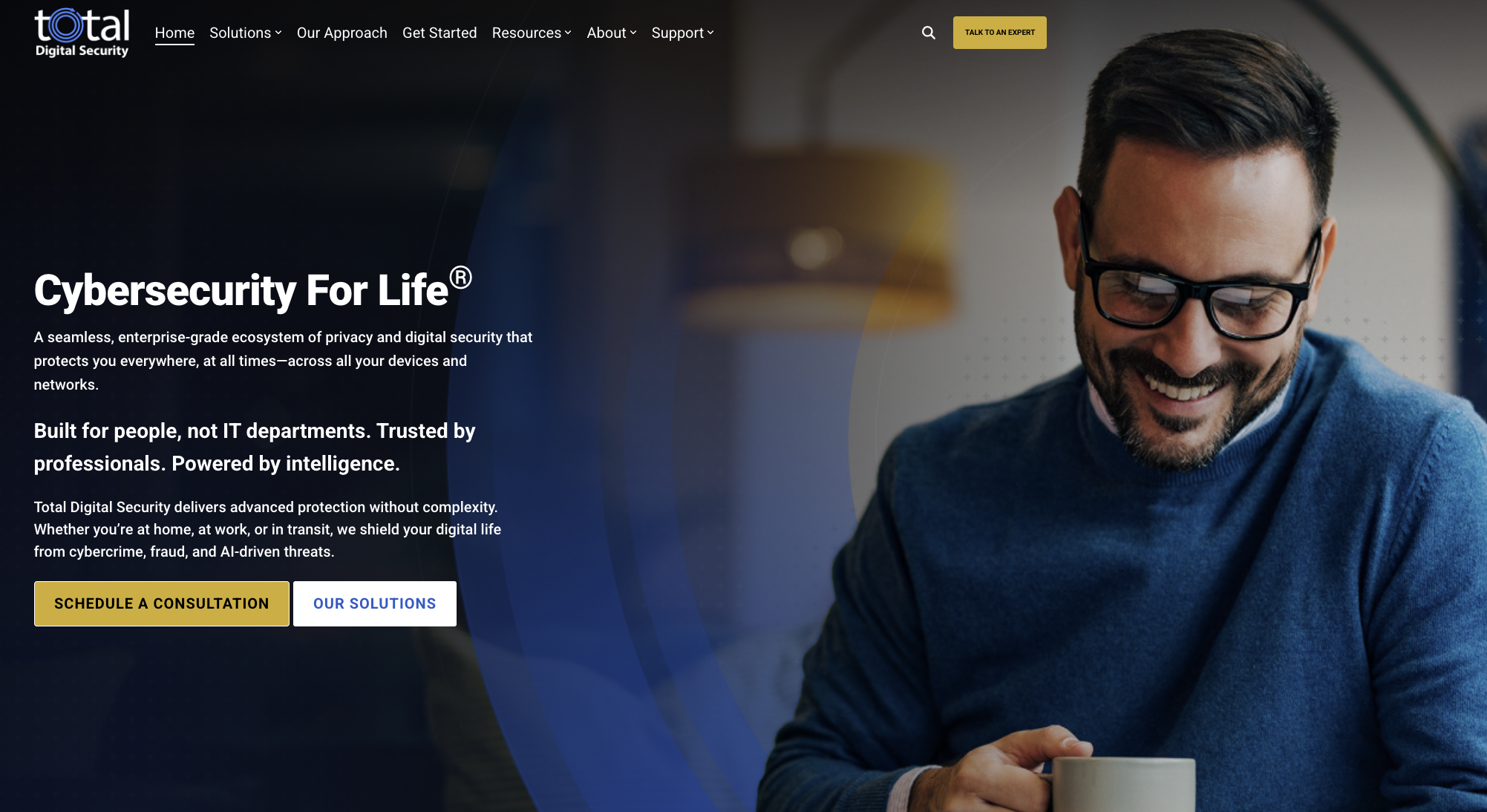9 min read
Stay Vigilant: Current AI and Cybersecurity Threats
Over the past decade writing these letters, I’ve made it my mission to help you navigate the digital age with confidence and resilience. If I have...
3 min read
![]() Total Digital Security
:
June 15, 2021
Total Digital Security
:
June 15, 2021

Most private clients and wealthy families are woefully unprepared for the massive cyber-related risks they face today. These individuals and groups are optimal targets for hackers seeking illicit profit. Here, we’ll explain how individuals and families can take measures that significantly minimize their risk of loss.
Everyone using the internet has vulnerability to “The Three Primary Attack Surfaces.” It’s at these three junctures of personal technology where most all cyber-related losses begin:
I. Email – personal and professional email
II. Devices – computers, phones, anything connected
III. Network - home, office, and public
✓ By focusing defenses where cyber risk resides, anyone can markedly increase privacy, digital security, and even personal safety.
Before diving into solving the problem of “The Three Primary Attack Surfaces,” some context is helpful.
Until about ten years ago, cybercrime used to be all about black-hat operators stealing IP or spying for secrets. Their targets were governments, large companies, and other organizations.
The Mobile Revolution began to change all that in 2012 when consumers’ mobile use first exceeded all other online activity. It was then that cyber-attacks began shifting to include individuals and personal technology, not just IT departments and servers. Now, after about ten years into the shift, the predominance of all cybercrime damage starts with an individual using personal technology, and the motive is cash profit.
But, also in 2012, a coinciding trend emerged. The IT security industry began to see capital investment flows like none seen before. Fresh, smart, and deep-pocketed VC capital began flowing and has gushed at record levels quarter-to-quarter ever since. The effect was to disrupt the sustaining hardware-centric business model and drive innovation toward “end-users” and “end-devices” using software-centric solutions.
Over the last few years, an emerging breed of IT security innovators have used their fresh-slate advantage to leverage emerging technologies like remote data centers and AI to build a new model, cyber security-as-a-service.
✓ Now, in the 2020s, the IT security industry delivers greater efficacy and affordability than ever, without the requirement for onsite hardware or IT support.
To protect private clients and wealthy families from cyber-related loss, apply next-gen cybersecurity solutions to defend “The Three Primary Attack Surfaces” - personal email accounts, internet-connected devices, and local home or office networks.
✓ These are the three pillars of privacy and security for anyone using the internet.
Privatizing email is the single most effective measure for reducing cyber risk. With a private email domain that uses the advanced protection available today, nothing gets to an in-box unless filtered, screened, credentialed, and, if necessary, sandboxed.
Inscrutable algorithms will not determine what you see, and there are never ads. And, with a private email domain, your information is your digital asset, not Big Techs.
✓ Some private clients are creating family email domains and consider it a multi-generational digital safe room, off the grid of the risk and abuse of "free" email.
Device protection technology has advanced significantly due to the organizational shift to BYOD (bring-your-own-device) and end-point compliance.
Now, advanced science for protecting personal technology like Macs, PCs, Apple iOS, and Android smart devices is affordable and simple to use. All hardware-centric risks are actively managed, and the device is optimally protected 24/7, including software updates.
✓ With this level of protection, viruses like ransomware and spyware are blocked, and apps will not spy.
It is said personal information is the "new oil" for the digital age. If so, our home and office routers are like a gushing rig, and anyone online is a wildcatter. Without security measures, everything connected to the local network in the home and office is like an on-ramp for a cybercriminal.
These on-ramps to private networks are proliferating in the form of doorbells, IP security cameras, Alexa's, and increasingly more of the physical items present in our daily environments are internet-connected.
Network security technology has advanced measurably, even over just the last few years. SD-WAN (software-defined wide area network) uses cybersecurity intelligence to manage a bubble of protection for smart homes and offices.
✓ The effect is 24/7 optimized defenses with total anonymity of all internet activity.
The potential for cyber-related harm, loss, and damages of all sorts looms continually and without reprieve. The notion is daunting and overwhelming for many, yet the human element is more critical to cyber risk than ever before.
✓ Today, digital risk is an existential risk, and cybersecurity a life skill.
When private clients and wealthy families use next-gen IT security, it not only changes the risk profile of the individual and small group but also advances critical-thinking skills faster and more effectively than “education” and “awareness training.”
✓ Together, an aware and informed individual using next-gen cybersecurity solutions is an equation that creates “Cybersecurity for Life.”
Cybersecurity for VIP

9 min read
Over the past decade writing these letters, I’ve made it my mission to help you navigate the digital age with confidence and resilience. If I have...

4 min read
For generations, family offices and ultra-high net worth families have mastered the art of estate planning — preserving wealth, ensuring succession,...

3 min read
Since 2013, Total Digital Security has been dedicated to a singular mission: providing cybersecurity for the world's most successful families and the...